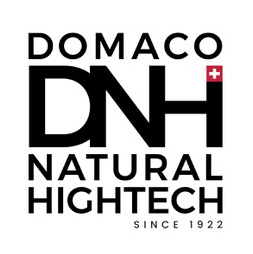CBD Food in trend

What is cannabidiol?
The hemp plant (Cannabis sativa or Cannabis indica) contains more than 80 so-called cannabinoids. Cannabidiol (CBD) is a noxious cannabinoid from the female hemp (cannabis) and has a decramping, anti-inflammatory, anxiety-relieving and pain-relieving effect via the body's own receptors in the endocannabinoid system. However, unlike THC, CBD is not psychoactive and therefore does not cause intoxication.
Trend of CBD-containing foods, dietary supplements and pharmaceutical products
Cannabis has been used as a medicinal plant ever since its discovery. From the 11th century, cannabis found its way into monastic medicine and was used for various ailments and as a substitute for opium. The abbess Hildegard von Bingen (1098-1179) recommended hemp as a remedy for nausea and stomach pain. Cannabis found its way into modern medicine through a report by the Irish physician William Brooke O'Shaughnessy (1809-1889), who, in the course of his medical work while stationed in Calcutta, India, noted an analgesic, antispasmodic and muscle-relaxing effect after using Cannabis indica (Indian hemp). In 1925, the Second International Opium Conference of the League of Nations in Geneva decided to restrict the cultivation of cannabis worldwide [1]. Legal restrictions on cannabis prevented its medical use.
CBD was discovered in 1940 and for the first time chemically synthesized in 1963 [3]. After a rocky 2020, the compound is now moving back into the supplement spotlight. Regulatory uncertainties have hindered the growth of the industry, but research on the endocannabinoid system confirms a link between CBD intake and various health issues, from inflammation to mood and beyond. Dietary supplements containing CBD and its therapeutic potential remain in vogue and are now finding use in complementary medicine.
Forms of CBD containing foods
CBD-containing products are also offered to the end consumer by CBD food manufacturers in ready-to-use form: As remedies, foods, cosmetics, tobacco substitutes, or as chemicals such as fragrance oil. In retail, the consumer will find various forms: Chewing gums, pastilles, gummy bears, drinks and pastries - depending on preference and desired effect.
Which raw materials are suitable for the production of CBD-containing food and dietary supplements?
For the manufacturing of food and dietary supplements with CBD, different CBD raw materials can be used: CBD oils (hemp extract dissolved in carrier oil), other extracts from the hemp plant (lower CBD content) and in its purest form as an isolate in powder form. Which raw material is used in the production of a ready-to-use product depends on various factors such as the dosage form and the desired dosage, the degree of effectiveness and the desired benefits of the final product.
Gum arabic pastilles as a perfect dosage form
Dietary supplements and pharmaceutical products in pastille form are excellent because they dissolve slowly in the mouth and therefore the active ingredients are absorbed slowly through the oral mucosa. The effect of the ingredients occurs more quickly than with dosage forms that have to be swallowed, such as capsules. Compared to fruit gummi bears, the gum arabic pastille is additionally rich in dietary fiber. As a prebiotic fiber, it is able to selectively increase the levels of lactic acid bacteria and bifidobacteria. Extracted from acacia trees, Gum Arabic is an all-rounder and additionally promotes beneficial microflora without showing any side effects.


